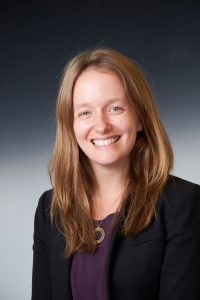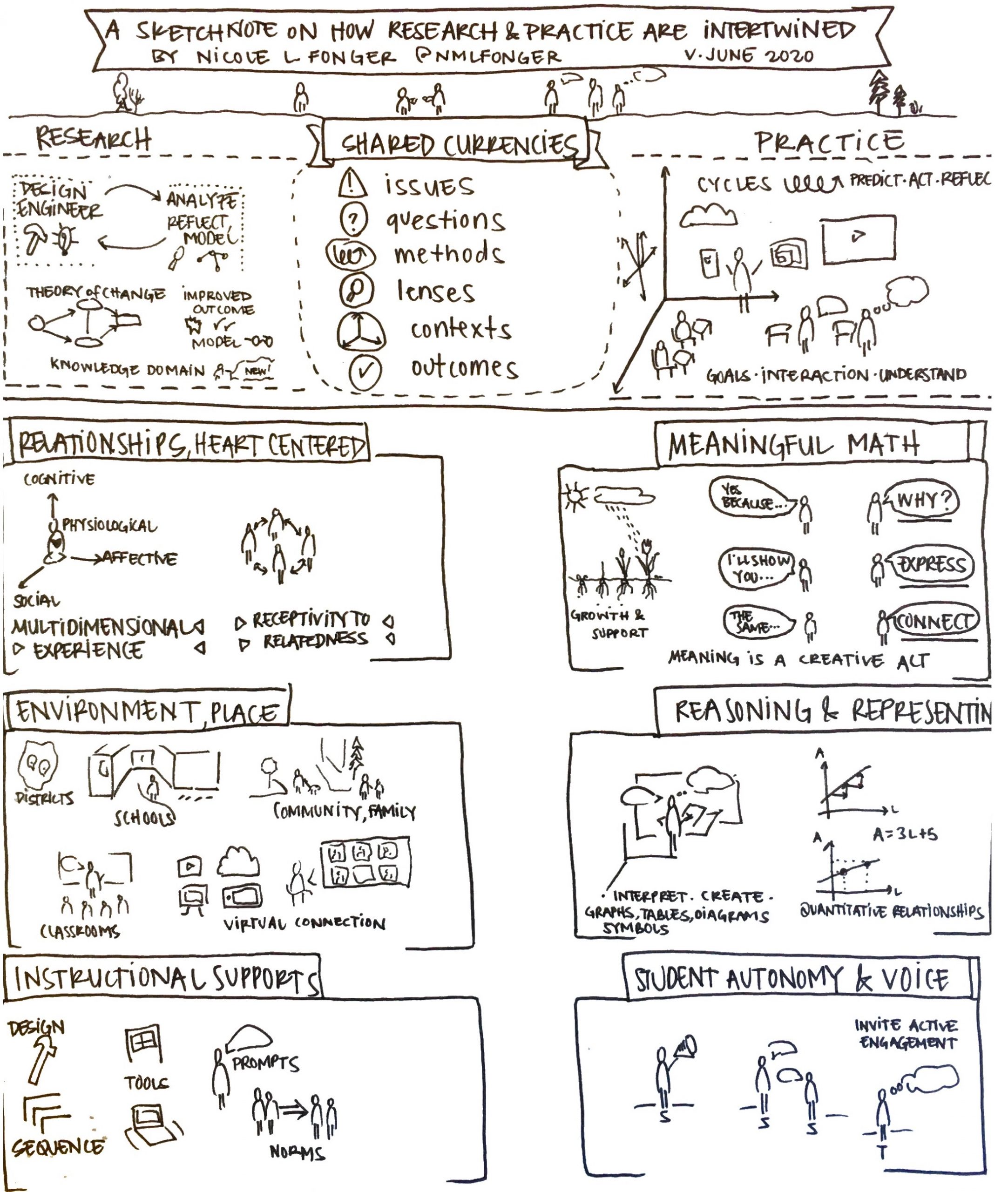A visual communication mechanism to strengthen research-practice links
 “My scholarship and creative activities are driven by a commitment to strengthen the relationships among the broad processes called ‘research’ and ‘practice’,” says Nicole L. Fonger, assistant professor of mathematics and mathematics education. Fonger creates and shares sketchnotes—a textual-visual form of communication—as a mechanism to push the boundaries of what is possible in current, textually dense publication practices. “Sketchnotes communicate with diverse audiences and entice engagement with innovative ideas,” she says.
“My scholarship and creative activities are driven by a commitment to strengthen the relationships among the broad processes called ‘research’ and ‘practice’,” says Nicole L. Fonger, assistant professor of mathematics and mathematics education. Fonger creates and shares sketchnotes—a textual-visual form of communication—as a mechanism to push the boundaries of what is possible in current, textually dense publication practices. “Sketchnotes communicate with diverse audiences and entice engagement with innovative ideas,” she says.
Fonger says her interest in sketchnotes began as a healing practice in yoga and meditation, and assisted her in her work as a postdoctoral fellow at the University of Wisconsin-Madison, and now at Syracuse University. On her website, nicolefonger.com, she uses sketchnotes to articulate her emerging research agenda and as visual abstracts of her research. “I’ve since expanded to use sketchnotes to distill and share others’ ideas in a digestible, 1-page format for conference talks and plenaries, or to share research articles with broader audiences,” she says.
As a Writing Across the Curriculum Faculty Fellow (2019–2020), through the College of Arts and Sciences at Syracuse University, she now teaches sketchnotes to undergraduates as a tool to synthesize ideas in mathematics and in mathematics education. She also teaches graduate students in education how sketchnoting can be a relaxing and creative process for synthesizing ideas, especially as a sense-making tool for complex material such as learning theories.
Fonger created the sketchnote featured here as a refection of how she understands research and practice to be intertwined in her practices as a researcher and educator. “I believe researchers and practitioners share a multitude of currencies, such as questions and contexts, and can create partnerships to exchange and co-create resources to address shared visions,” she says. “Several tenets of my philosophy of teaching and learning mathematics are summarized including being heart-centered, focusing on environment and place, designing instructional supports and cultivating student autonomy and voice. In mathematics in particular, meaning is cultivated through engaging in practices of reasoning and representing relationships through graphs, tables, symbols, and diagrams. Meaning-making is a creative act.”

